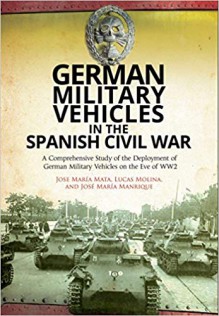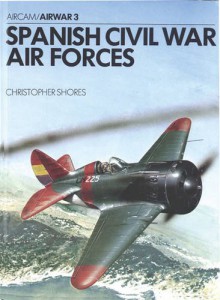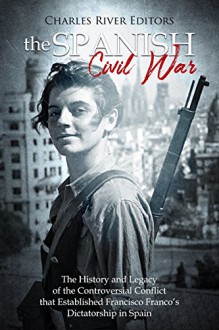
Thanks to NetGalley and to Bloomsbury Publishing for providing me an ARC copy of this book that I freely chose to review.
I have long been a fan of Isabel Allende’s novels, although I haven’t read any of her recent books, despite my best intentions. I read many of her early novels, in Spanish, and I enjoyed her take on Magic Realism, which I found inspiring. When I saw this novel, which combined Allende’s writing with a historical subject close to my heart (I’m from Barcelona, like the protagonist of the novel, and some of my relatives lived experiences quite similar to those Victor goes through), I had to read it. And although it is a very different reading experience from that of The House of the Spirits, I enjoyed it enormously.
This novel is the story of Victor Dalmau, whom we meet at a very difficult moment, during the Spanish Civil War. He was studying Medicine and helps look after the wounded in battle, while his younger brother, Guillem, fights for the Republic. Told in the third person, mostly from Victor’s point of view (there is a fragment where the novel deviates from that, but there is a good reason for it), the book follows his life pretty closely and in chronological order, although not all periods of his life are shared in the same detail. We learn about his family, his parents, Roser (his brother’s girlfriend and one of the students of Victor’s father, a musician), and hear first-hand of his experiences during the war, the retreat (“la retirada”), and the problems a huge number of Spaniards who escaped to France had to face once there.
Pablo Neruda, the Chilean poet, is fundamental to the story, not only because he chartered the SS Winnipeg that took many Spaniards (around two thousand) to Chile, escaping from Franco’s regime and the French camps, but also because he personally appears in the novel and each chapter is introduced by one of his poems. In fact, the title of the book also comes from one of his poems, and it is a descriptive metaphor of the country, Chile, that welcomed the refugees with open arms. The story also follows Victor’s later adventures, his studies and work as a cardiologist, Roser’s works as a musician and her creation of an orchestra, and the historical and political upheavals they have to confront, with further displacements and persecution. What is to be an emigrant, how different people adapt to different realities and countries (Victor and Roser are pretty different in this respect), and also the invaluable contribution those very same immigrants make to the very fabric of the country that takes them in, are threads that run through the whole novel.
This is my first experience of reading Allende’s work in English, and I thought the translation was excellent. The language is both functional and beautiful, capturing the emotions of the characters, and vividly portraying their experiences, at times harrowing and at others uplifting. I was very touched by the narrative, and although that might be in part due to my personal connection to the material (not only the historical aspect, but also the experience of life in a different country) , the effect was not limited to the parts of the story I was familiar with. The adventures of Victor and Roser in Chile, Allende’s government (of course, Salvador Allende was Isabel’s uncle), and the military coup, further tested their endurance and made them start again in Venezuela. Added to the larger historical events, we have a story of love, family, and displacement, which will resonate with many readers, even if they are not familiar with the particular historical and geographical setting. Circumstances might change, but the problems are universal.
The author talks about the genesis of the book in a note at the beginning of the book and explains it in more detail in the acknowledgements at the end. Although this is a novel, it is based on real accounts, and its main character was inspired by another Victor, Victor Pey, who lived to be 103, and who experienced many of the trials and tribulations we read about. Allende creates a catalogue of varied characters, complex and credible, and mixes historical figures with fictional ones seamlessly. Victor is a quiet man, hard-working, who prefers action to idle talk, and whose mission in life seems to be to help others. He is a survivor who can be naïve about the consequences of his actions and about the motivations of others, but he always expects the best of others and hopes against hope. Roser, his wife, is a fabulous character, a strong woman who keeps going no matter what, and their relationship evolves through the book, never getting old and with plenty of surprises. There are plenty of memorable characters in the book, some that play a larger part than others, and some that keep popping up at regular intervals as time passes. I was intrigued by the Solan family, fascinated by Juana, their lifelong servant, and also appreciated the small details that add a human touch to the historical figures, Pablo Neruda in particular.
I loved the writing style, poetic and lyrical at times, despite dealing in some very harsh topics. The flow varies, and some historical periods are described in more detail than others, as happens in memoirs. I’ve read comments of readers who say there is too much telling in this novel. There is a fair amount of telling, that is true, by the very nature of the story, but it suits the personality of the protagonist, and to be honest, I cried with the story as it is. I’m not sure I would have managed to read it if it were even more emotional. (I smiled as well, and it is a hopeful story overall, but it did touch me deeply).
I have highlighted many passages, and it’s difficult to choose one or two, but I decided to give it a try.
Here Victor Dalmau observes the work of the female volunteers looking after injured soldiers in the Spanish Civil War:
Volunteer women would moisten their lips, whisper to them, and comfort them as if they were their own children, in the knowledge that somewhere else, another woman might be cradling their own son or brother.
If you are very sensitive, you might want to look away now:
This was to be his most stubborn, persistent memory of the war: that fifteen- or sixteen-year-old boy, still smooth-cheeked, filthy with the dirt of battle and dried blood, laid out on a stretcher with his heart exposed to the air.
And I had to include one from Pablo Neruda, quoted here in chapter 2.
Nothing, not even victory,
Can wipe away the terrible hole of blood.
I love this novel, which I recommend to readers of historical fiction, particularly those interested in the Spanish Civil War and/or the history of Chile, to fans of Isabel Allende, and also to those who’ve never read her before, but are looking for a compelling story, masterfully written, with a memorable cast of characters and a story with many parallels to recent events. I attended a conference about la Retirada (the retreat of around 500000 Spaniards, both military and civilians, escaping to France from Spain at the end of the Civil War, in February 1939) on its 8oth anniversary earlier this year, and looking at the pictures, it gave us all pause, because if we just changed the background of the photographs and the clothes, we could have been watching the news. Like those images, this is a novel that will stay with me. I might be biased but that’s my prerogative and I can’t recommend it enough.


 Log in with Facebook
Log in with Facebook 









